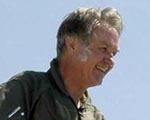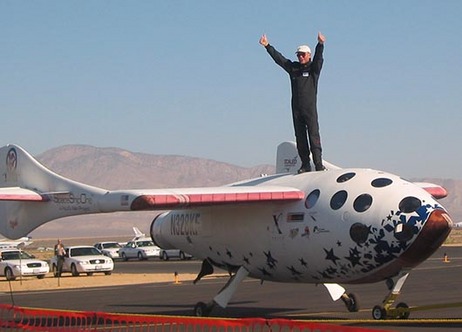Open Innovation: X-Prize
Published Oct-21-09Breakthrough:
The development of the world’s first private spacecraft to fly to the edge of space.
Company:
Burt Rutan, United States
The Story:
 Ever since Yuri Gagarin whistled round the Earth aboard Vostok 1 and Neil Armstrong made his giant leap for mankind millions of ordinary mortals have entertained the thought, “Gee I wouldn’t mind having a go at that.”
Ever since Yuri Gagarin whistled round the Earth aboard Vostok 1 and Neil Armstrong made his giant leap for mankind millions of ordinary mortals have entertained the thought, “Gee I wouldn’t mind having a go at that.”However, opportunities to leave the planet and enjoy a little zero gravity R and R have only previously been made available to groups of highly trained astronauts, and in recent years, multimillionaires with deep pockets.
Space Tourism
The dream of space tourism is not new. Ever since those heady space race days of the 1960s and 70s many people assumed that it would only be a small matter of time before it was the turn of the tourists.
However, several problems with this notion soon materialized. Namely, that it was too expensive and rockets were not reusable. The arrival of the space shuttle raised expectations once again, but the technology proved to be prohibitively expensive and Challenger disaster put paid to any kind of commercial venture.
The space agency NASA and the US Air Force tried to get a few projects off the ground, notably the X-15 and X-43 space planes, but they ran out of money.
X Prize
But then in the mid 1990s the space tourism dream was revived by entrepreneur Peter Diamandis, who was convinced that it was up to the commercial world to open up space frontiers for the masses. He established the X Prize, one of the most famous examples of open source innovation. He offered an uplifting $10 million reward to boost efforts to create the first vehicle that would make it to sub orbital space (62 miles above the Earth) twice in 14 days, carrying the mass equivalent of three people.
His aim was to do for space tourism what the Orteig Prize had done for aviation in the 20th century. It had stimulated Charles Lindberg’s first solo, non-stop flight across the Atlantic aboard the Spirit of St.Louis.
It wasn’t just a matter of designing a concept for the competition; this would have to be a technology that could be used to make space tourism science fact and not science fiction
Twenty competitors joined in the race for the X prize. There were plenty of big ideas, and the eventual winner was prolific aircraft designer Burt Rutan.
Aeronautical Innovation
Rutan is something of a poster boy for aeronautical innovation, having created dozens of innovative aircraft, including the first plane to fly nonstop around the world without needing to refuel. But the space plane concept was way ahead of anything he had attempted before. It would have to go much faster and far higher than any of his previous planes. But in fact altitude was one of the last things on Rutan’s mind.
To come up with appropriately titled SpaceShipOne he focused his thoughts on the loads that the ship would have to face and worked out the physics of it. He didn’t believe that altitude was such a big deal.
SpaceShipOne has several neat innovations. The first is that it is made of carbon fiber composite so that it is light and heat resistant. It is launched from the air by another craft which carries it to 15,200 meters before releasing it. Thus it avoids many of the perils of a rocket launch from the ground. The hybrid rocket engine consists of a solid rubber fuel and a liquid oxidizer which can be turned on and off, giving a measure of controllability. And when it’s time to come back down to Earth a further innovation kicks in. The twin tail structure lifts which creates high drag to slow down the spacecraft. And it keeps it the right way up no matter the angle of re-entry.
Another Giant Leap
SpaceShipOne performed its double flight to win the X Prize in 2004 and Rutan then teamed up with Sir Richard Branson who ordered five bigger versions (called SpaceShipTwo) for his fledgling Virgin Galactic company. The spaceline is taking orders for suborbital space flights with tickets priced at $200,000 while test flights continue from Rutan’s Mojave Desert base.

